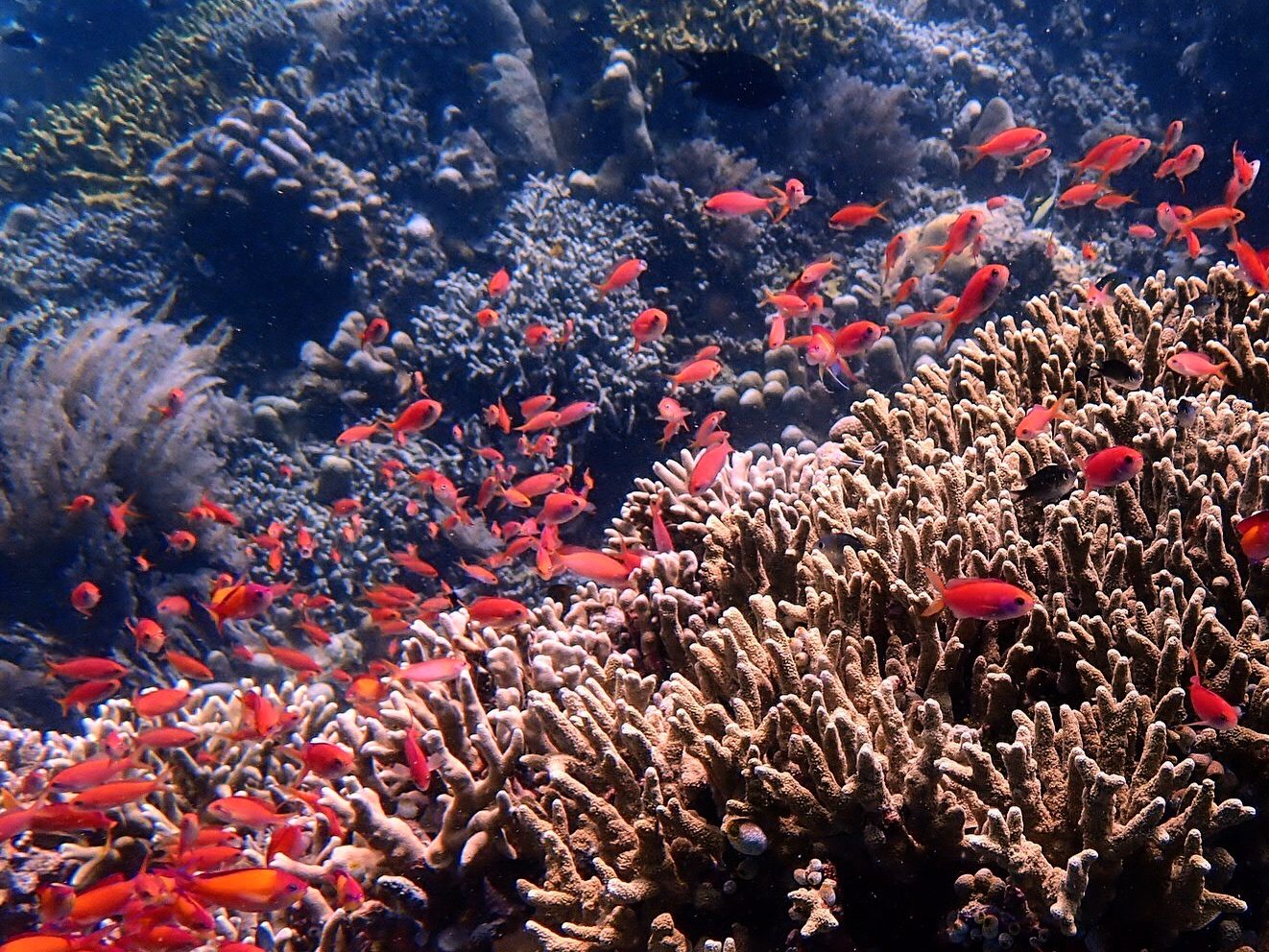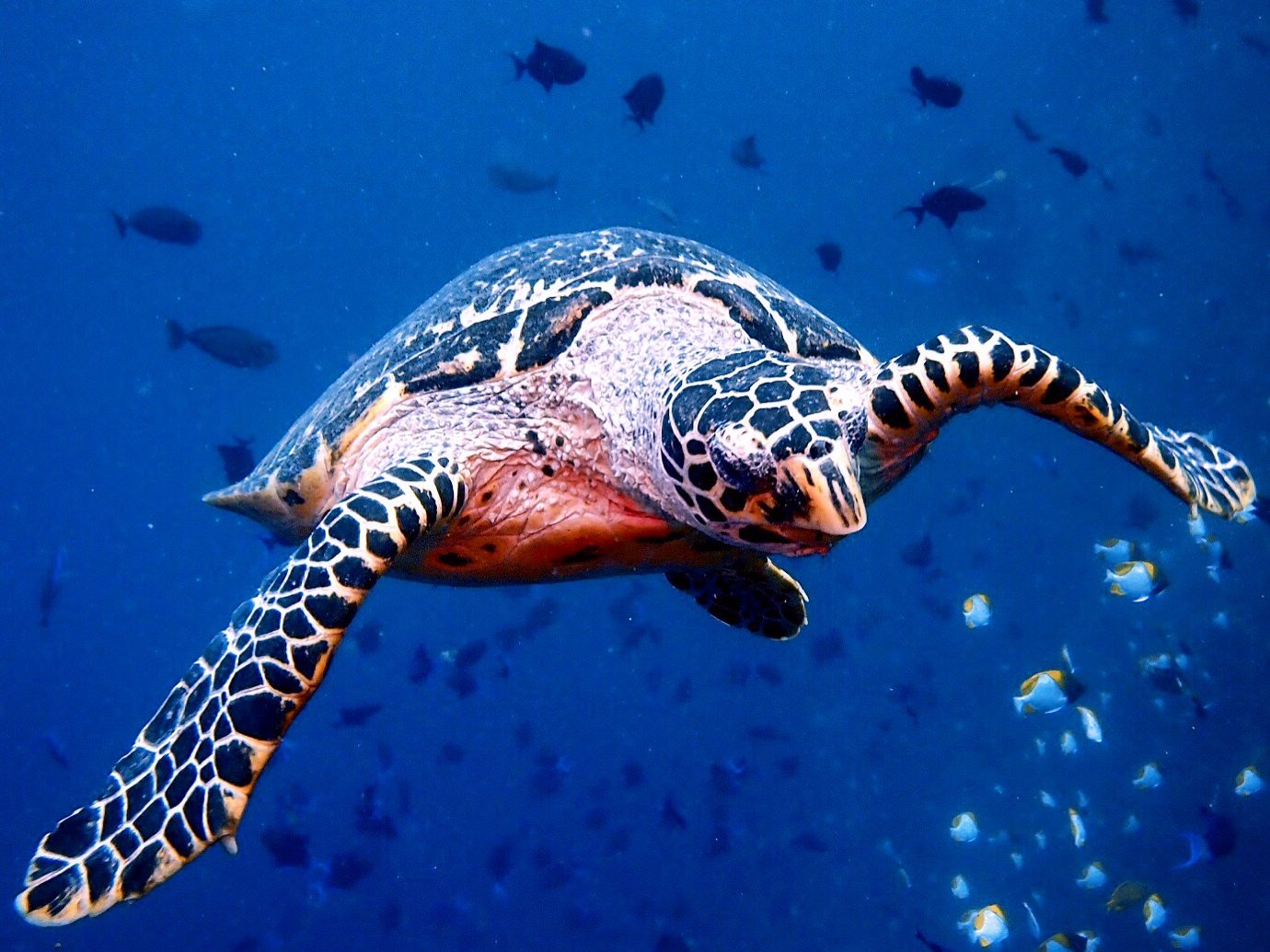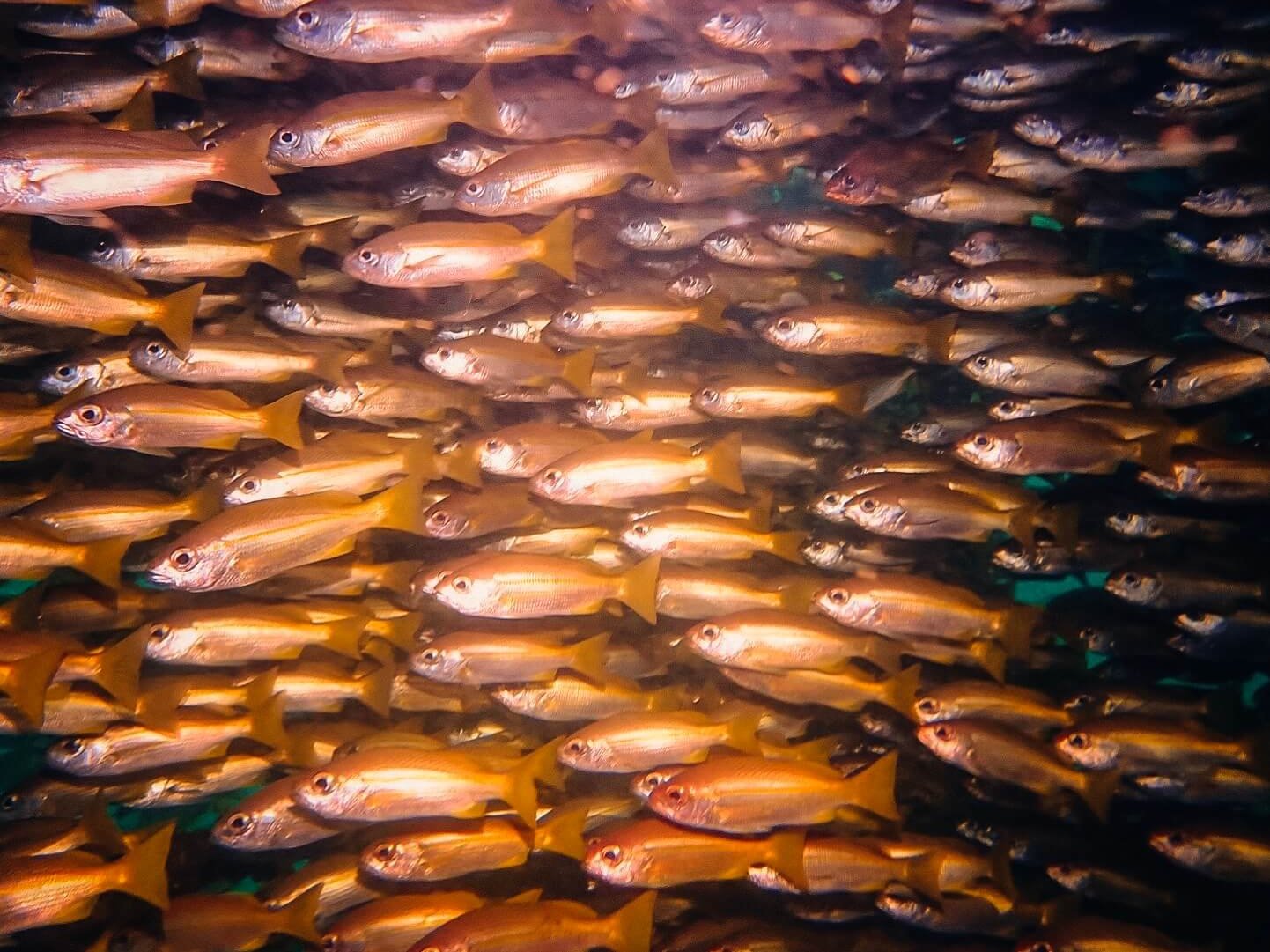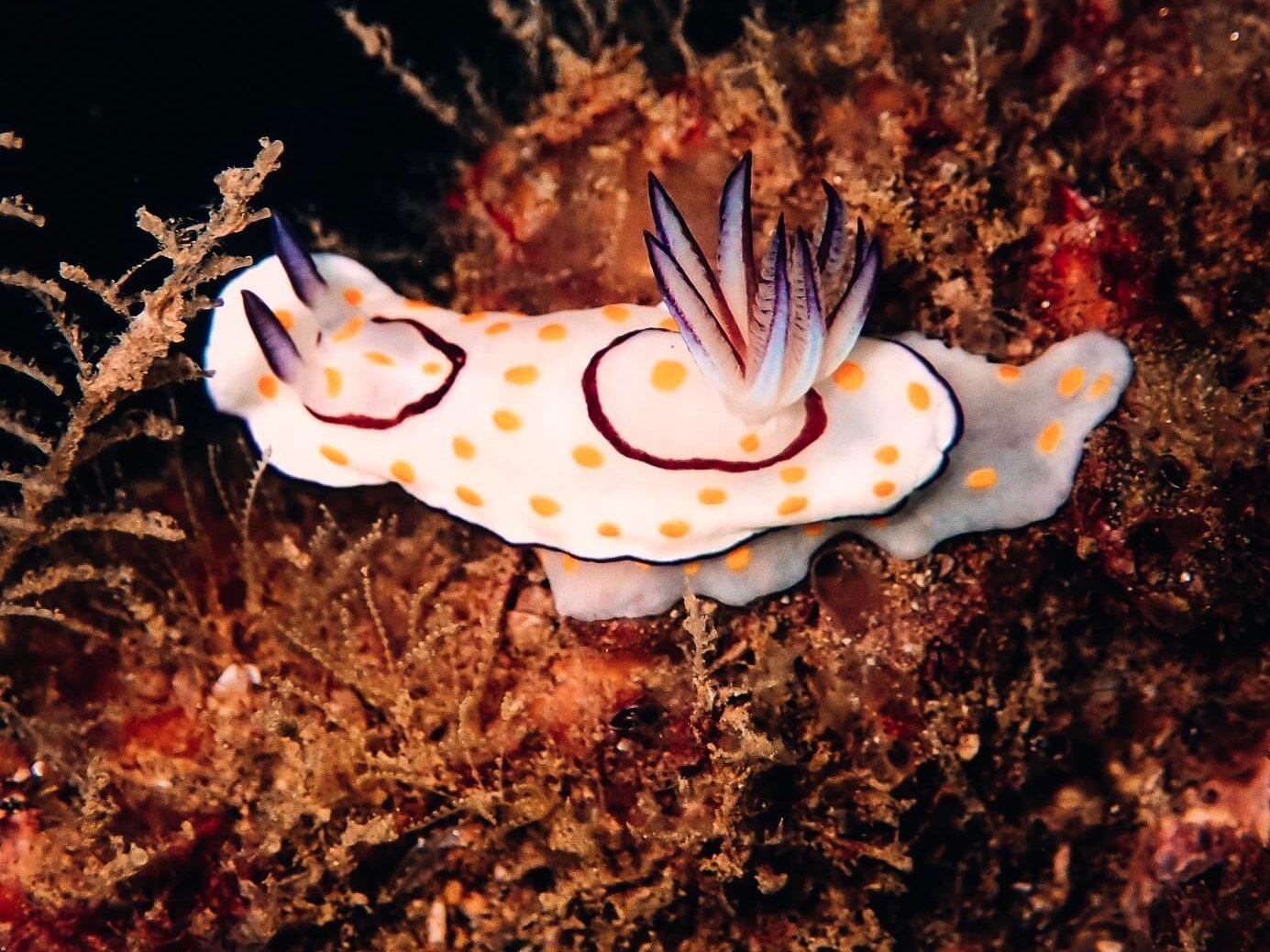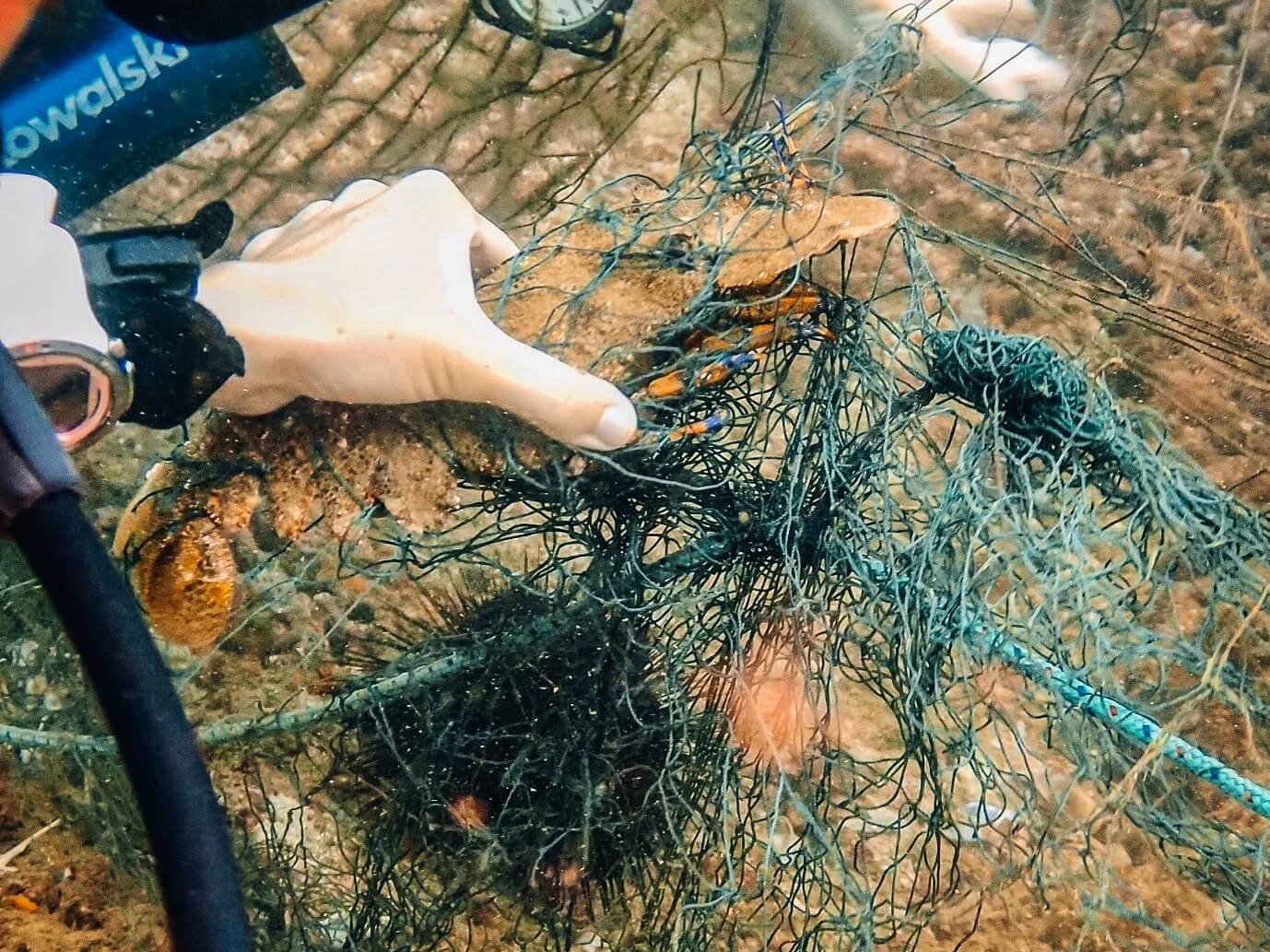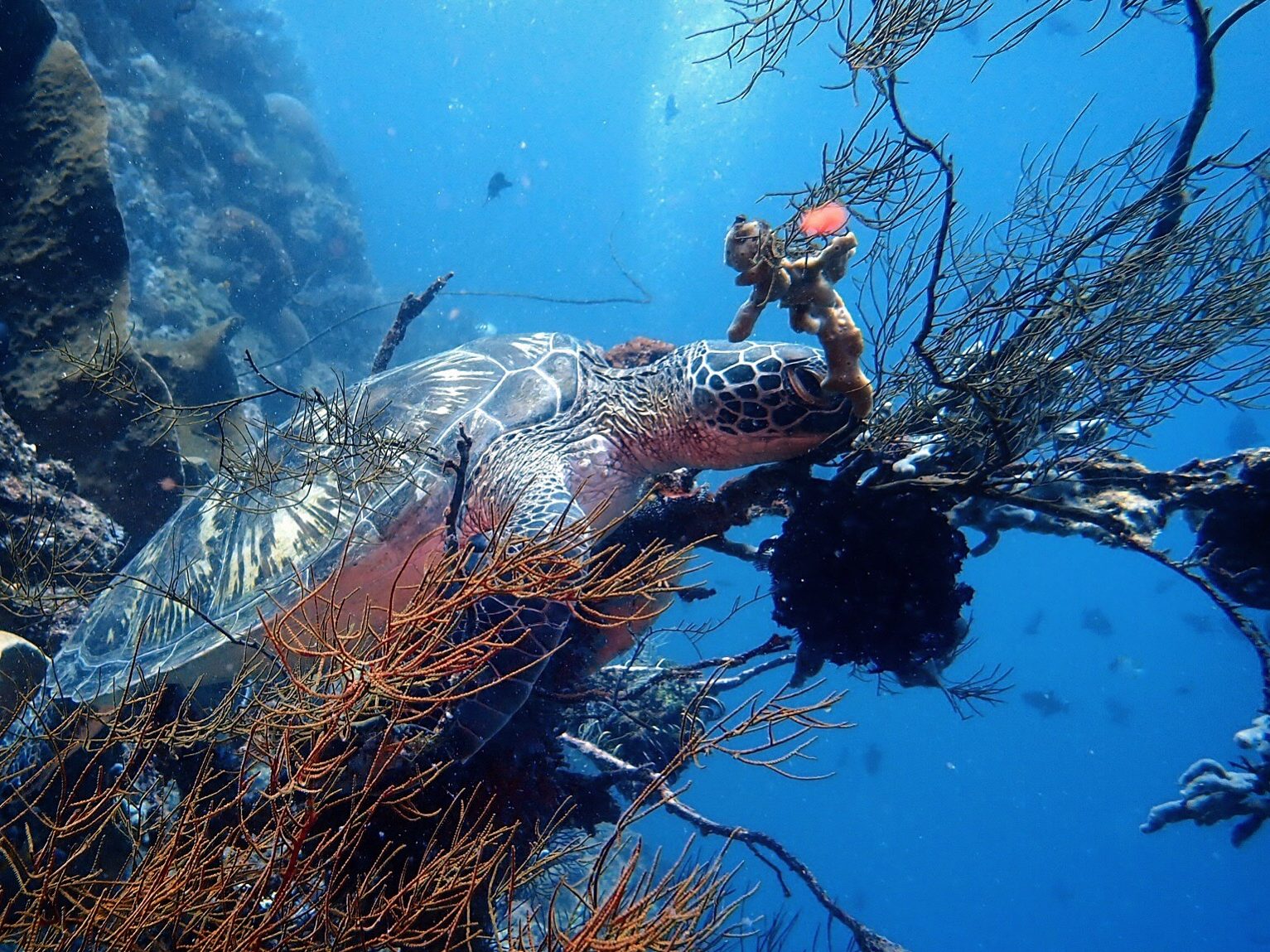
On our penultimate day of Manado diving, we dove a site with some crazy current. It was the most fun I’d had being swept along at high speeds since Palau. It kept switching directions too; we’d be flying down the reef in one direction, arms outstretched as if we were flying up in the sky, only to suddenly be kicking into the current and have our guide, clad in snorkel fins, signal for us to go back the other way. We swapped directions three or four times, and I loved every moment of it.
The first time I dove in any real current was in Palau, and I remember breathing through my air much quicker than usual because I was trying too hard to control my every movement. I’d since learned better. The fun in current is in surrendering. Surrendering to the power of the ocean, and letting her carry you along. Embracing the momentum, rather than fighting it. Using minimal fin movements to harness her power in the right direction, like a sail catching the wind. Surrender, and the fun begins. I’m going to stop now before I start sounding any more like an inspirational yoga quote on Instagram.
On one of these instances when we found ourselves kicking into the current, Fletch became lost in his own little world and missed the signal from our guide that it was time to turn around. Stefan and I both stopped to wait for Fletch to look back, ready to give him the turn signal as soon as we caught his eye. But on he kicked, effortlessly into the current, as if he wasn’t even aware that there was any opposing force in the water. He became smaller and smaller until only his loud orange fins were visible. I realized that he wouldn’t be looking back until we were no longer within eye sight, and so went to chase after him. Chasing is not something you ever want to do on scuba. The goal is to always breathe slowly and deeply. Exerting yourself tends to do the opposite to your breathing. That’s where some experience with yoga and breath control comes in handy. Have you ever tried to run while seeing how many strides you could make it on each inhale and exhale? That’s basically what I was doing except with finning. Between streamlining and an epically powerful pair of fins, I caught up quickly, but not without tiring just as easily. Arms outstretched, I was going for his calf; skin on skin would let him know it was me rather than an impersonal tug on the fin. Right as my fingertips were about to make contact though, I saw his calf muscle flex and one smooth kick later he was several meters ahead of me again. My leg strength was no match for his. An impersonal tug on the fin it would have to be. We all had a good laugh later on.
We had come to Manado for exactly this, the currents, and the big fish that those currents brought in. In doing our research, we had been under the impression that this was the way to do Northern Sulawesi, to visit Bunaken for the pelagics, and Lembeh for the macro life. Our first dives in Manado though, had been spent meandering around in the muck off the mainland and avoiding the slightest hint of a current. It had taken a couple requests to the dive guides and to the manager, and a puzzled look or two from the Indonesian boys, wondering if we were joking or not, before we finally convinced the team that yes, we really did want to dive in current. Currents bring in fish.
A few puzzle pieces slowly started to fit together as to the kind of diving that the resort was trying to cater to. None of the other groups we talked to were also including Lembeh in their trips, so that explained why the guides were more interested in searching for macro critters; this was many of the guests only chance to see them. The manager had also told me one day that we weren’t their typical dive guests. I had let out and awkward chuckle, and thinking he was referring to our professional rankings, asked if it was because most dive instructors couldn’t afford to take their own dive holidays. He said that might be part of it, but was mostly referring to the fact that we were all much younger than their average guests. So that explained why we had been avoiding currents in the beginning. The guides were likely taught to keep the dives as low-effort as possible, to cater to older clientele. This theory was confirmed when the owner showed up towards the end of our stay, having just returned from a trip to Raja Ampat. She was positively gushing over how much more she loved the diving here, because it was just so easy. You didn’t have to do anything. So if you are ever looking for some laid back diving in Northern Sulawesi, Thalassa Dive Resort is your spot.
I’ve mentioned before that the staff were all extremely accommodating, and so after a couple days of determining that we were serious about wanting to dive in currents, our guides were more than happy to break up their usual routine and bring us to some fantastic wall dives.
Those walls were home to many turtles. So many turtles, that it would have been an incredibly rare dive to not spot at least a couple.
| Hawksbill Sea Turtle |
| Green sea turtle with the most beautiful shell. |
| Green Sea Turtle |
This was my favorite turtle of the trip. We found him completely crashed out, slumped over a large branch of coral jutting out of the reef, making him look like those pictures of the big cats you see on safari, napping up in a tree, legs dangling limp over the sides. He was way too invested in his prime napping spot to care that we had him surrounded like paparazzi, taking photos. Most turtles would have been annoyed and escaped out into the blue. Not this guy. He knew his spot was too good to give up, and that we would be gone before too long.
| Green Sea Turtle lounging on a a branch of coral. |
The walls must not have been home to very many moray eels, because our guides would get incredibly excited whenever we spotted one. It’s always telling how common a critter is by how often they are pointed out. The more common, the less you bother pointing it out unless there’s really not much else to see.
| Moray Eel |
Fletch showed me my first electric clam: bright orange, fleshy lips protruding from the wall with neon hairs jutting out in every direction like a mohawk. And in the midst of all that color, it looks like a miniature lightning storm is occurring. Scientists used to believe that the lightning show was an example of bioluminescence, but research in the 1990s determined that the real cause was ambient light being scattered. The edge on one side of the mantle is made up of tissue that reflects light, while the edge of the mantle on the other side is made up of tissue that absorbs light. The result is a lightning-like effect when the lips open and close.
| Electric Clam (Ctenoides ales) (Check out the video on Instagram!) |
There are nearly 30 species of anemonefish, or Nemo‘s as most people know them as now, thanks to one of the greatest animated films ever. I had only seen a handful of these previously, but Bunaken was home to many new species that I had never seen before. These colorful little guys aren’t quite the true Nemo, who is a clown anemonefish. These are the false clown anemonefish.
| False Clown Anemonefish (Amphiprion ocellaris) |
Bunaken National Park was home to 390 species of coral, making the walls a colorful and picturesque sight.
| Birdseye view of a colorful reef wall in Bunaken National Park. |
When the currents would subside, our guides would return to combing the reef for critters so tiny, only a practiced eye could spot them. This little guy is known as a candy crab. He blends in perfectly with the soft coral on which he lives, and is less than 1 cm in size (although can grow to a whomping 1.5 cm).
| Candy crab; do you see him? (Hoplophrys oatesii) |
Finally I present to you the marbled shrimp. Yes, that is a shrimp with the pinocchio nose, fuzzy pom poms, candy cane striped legs, and kindergarten art class orange squiggles. They come in dozens of other varieties of mismatched loud colors and patterns too. And despite the ostentatious costumes, they’re actually quite shy creatures, prone to hiding in the coral and rubble. Maybe it’s like the kid who died his hair blue and is trying to hide it under a hat.
| Marbled Shrimp (Saron marmoratus) |


